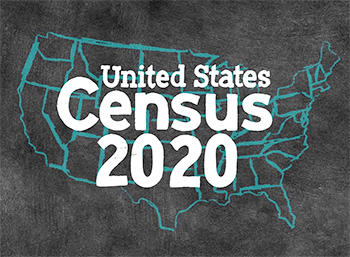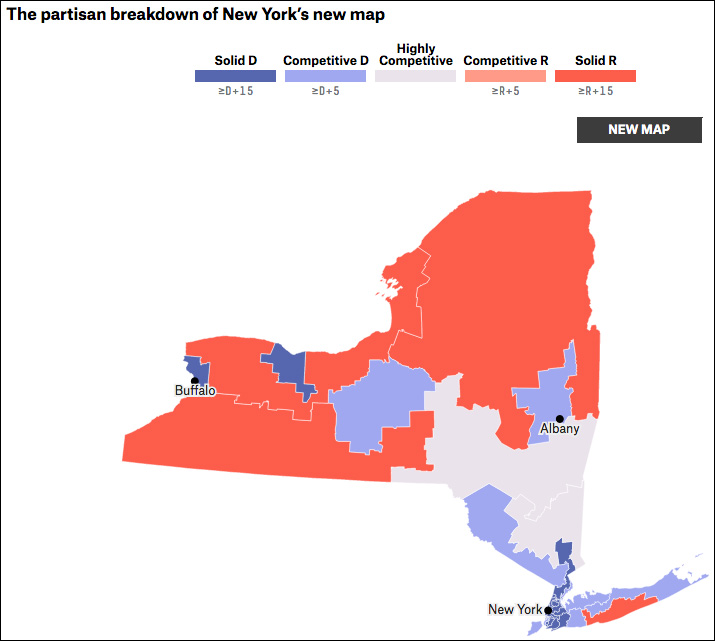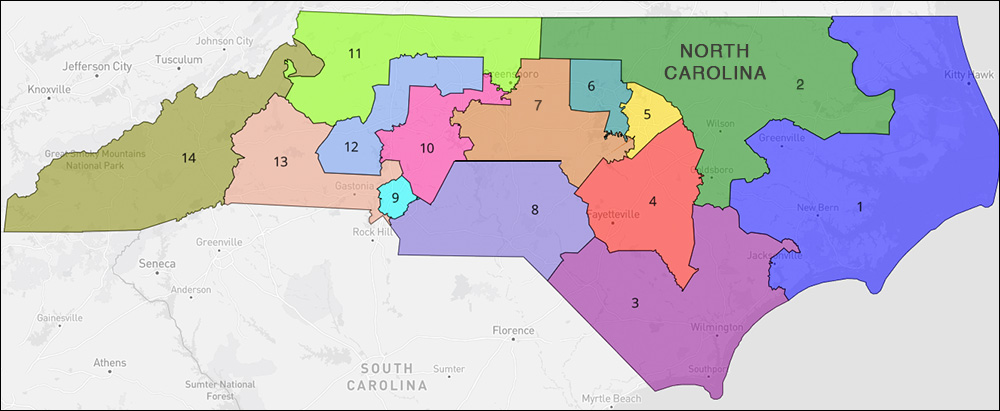By Jim Ellis — Wednesday, June 4, 2025
House
One certainty for the 2026 election cycle is that Colorado’s 8th Congressional District will again feature a competitive and hugely expensive campaign.
The Centennial State gained a new US House seat from the 2020 national reapportionment formula due to excessive population growth. The Colorado Independent Congressional Redistricting Commission members purposely drew the state’s new 8th CD as a highly competitive district that could go back and forth between the parties to reflect the electorate’s short-term political swings. So far, the district has performed as designed.
In the 2022 election, Democrat Yadira Caraveo, then a state Representative, won the 8th District’s initial election with a tight 48.4 – 47.7 percent victory margin over state Sen. Barbara Kirkmeyer (R-Weld County). Two years later, reflecting a more Republican trend in the marginal district, then-state Rep. Gabe Evans (R) unseated Caraveo by a similarly small victory spread, 48.9 – 48.2 percent.
The 2026 campaign has already drawn five Democratic candidates, including former Rep. Caraveo. Her campaign just released the results of the latest internal Public Policy Polling survey (May 19-20; 467 likely C0-8 Democratic primary voters; live interview & text) that posts the former Congresswoman to a substantial early lead in the party primary.
According to the PPP ballot test, Caraveo would attract 36 percent support compared to state Rep. Manny Rutinel (D-Commerce City) and State Treasurer Dave Young’s eight percent preference factor. State Rep. Shannon Bird (D-Westminster) and former teacher’s union president Amie Baca-Oehlert trail at five and four percent, respectively.
The Democratic primary is already attracting significant local media attention. A story has surfaced that Caraveo, a physician, had previously attempted suicide. The district also attracted early acclaim when Rutinel, the first announced candidate, raised just under $1.2 million in this year’s first quarter.
In contrast, Caraveo, who spent over $8.1 million for her 2024 campaign and ended with just over $4,300 remaining in her account as 2024 concluded, had just $330 cash-on-hand for the new campaign at the end of March. Her financial status, however, will soon change. State Treasurer Young and state Rep. Bird are recent entries into the race. Baca-Oehlert is soon expected to formally announce her candidacy.
For his part, Rep. Evans reported 2025 receipts through March 31 of just under $811,000 and showed slightly more than $755,000 in his cash-on-hand column. In 2024, Evans’ campaign spent just under $2.7 million in the challenger effort.
We can expect to see each side, when adding independent expenditures to the aggregate, spending as much as $25 million apiece. In 2024, outside spending in the CO-8 race totaled almost $17 million for the Democrats (61 percent spent on negative ads) and $12.2 million for the Republicans (90 percent negative) according to the Open Secrets organization reports.
The 8th District lies north and east of Denver and contains the larger cities of Thornton, Westminster, Greeley, and Commerce City, and wholly lies in parts of three counties, Adams (87 percent of county’s population), Larimer (five percent), and Weld (75 percent). President Joe Biden carried the 8th District in 2020 with a 50.8 – 46.3 percent margin. Two years later, President Donald Trump rebounded to defeat Kamala Harris here, 49.6 – 47.8 percent, again reflecting the district’s tight political nature.
It can be debated whether having such a marginal political district that guarantees hugely expensive congressional campaigns every two years is reflective of the good government intention that the redistricting commission members professed for their reasons of drawing such a district. Yet, so far the draw has produced the desired effect.
The Colorado redistricting system features three citizens commissions each constructed to draw a set of districts (i.e., congressional, state Senate, and state House of Representatives). Some believe this model has been the best of the states that employ commissions.
One reason for the positive reviews is the state Supreme Court has a defined role in the process. Once the commissions complete their respective maps, the finished plans automatically move to the state Supreme Court for legal review before the plans are finally adopted.
Having the court as part of the defined process has resulted in no redistricting lawsuits being filed in the state; therefore, yielding a much smoother process. Unlike many states, the Colorado process has now virtually guaranteed that the maps will stay in place for the entire decade consistent with the original redistricting intent.






